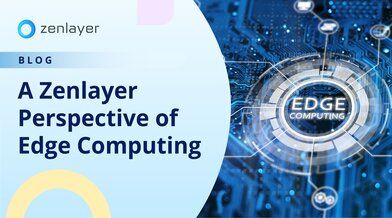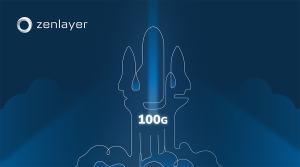(John Fu is a Senior Product Director at Zenlayer, responsible for global business infrastructure. John has more than 10 years of IT experience and 6 years’ experience in cloud computing. He has worked across many industries like gaming, Internet of Things, AI, and manufacturing to accelerate digital transformation.)
What is edge computing? To visualize, imagine an octopus with many tentacles. Octopuses have a neural ring that circumvents the brain, allowing the tentacles to communicate independently and efficiently perform various functions like eating, without passing information back to a central location.
Similarly, an edge network is a distributed computing model that avoids routing most data into a central data center. An edge network can analyze data no matter where it originates, and in much less time.
Let’s take a closer look at why organizations are using edge computing, some of the supporting technologies behind it, and Zenlayer’s unique approach to this groundbreaking technology.
First Up: Why do we need edge computing?
We’re now in the digital era, where everyday scenarios and applications generate massive amounts of data — a trend that’s going to accelerate significantly.
The most common deployment method right now involves running all applications and digital services through the cloud. However, the cloud isn’t meant to handle the heavy amounts of data that today’s applications produce. Attempting this leads to significant network bottlenecks, which negatively impacts end users.
Edge computing ultimately complements the cloud, acting like a buffer and reducing strain. To illustrate, consider an application like Douyin (TikTok), a leading video-sharing application with over 600 million daily active users. Imagine an end user streaming Douyin in the city of Seoul, with a server located about 716 miles away in Tokyo. At such a distance, round-trip data processing delays are likely to occur, resulting in jitter, packet loss, and network congestion.
Edge computing eliminates this problem, processing most computations close to the end user while only sending a small amount of data to a central cloud. So, if an end user tries to access an app like Douyin in Seoul, the edge network can perform that computation in that city, reducing latency and producing a much smoother end user experience.
Why edge computing complements the cloud
It’s important to note that edge computing does not replace the cloud, as companies still have some need for centralized processing. Rather, edge computing complements the cloud through a collaborative relationship.
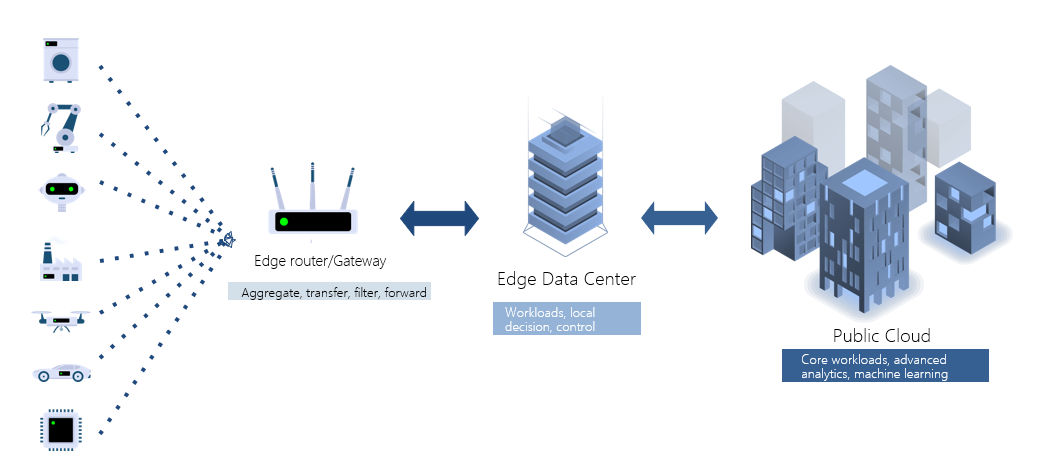
This diagram illustrates a series of network terminals such as household washing machines, industrial equipment, IoT devices, cars, and so on — all of which generate large quantities of data. These devices can all be converted by routers or gateways at the edge, for local data analysis and processing.
In the past these devices would need to connect to the cloud, but this is no longer necessary. Most data processing can instead take place at the edge, relieving a significant amount of pressure from the cloud.
Key enabling technologies for edge computing
Edge computing requires many supporting technologies. For example, edge computing requires a robust global network with edge virtualization, local storage, and load balancers to prevent overloading servers. Security services, distributed collaboration tools, and lightweight programming all play a key role in edge computing as well.
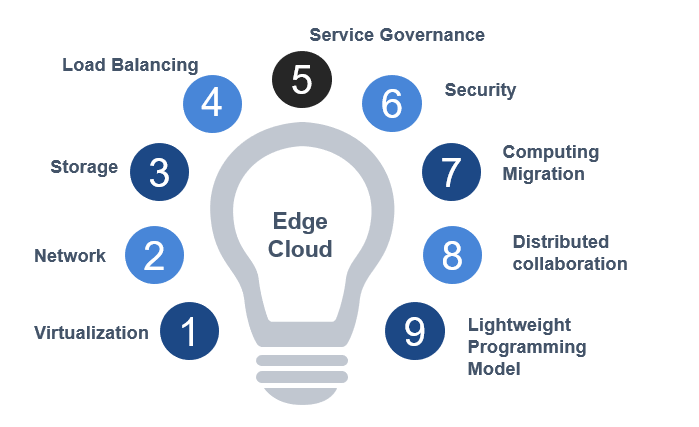
Infrastructure is also developing very rapidly, which is in turn driving demand for edge computing. For example, in the past, servers were particularly troublesome when deploying applications. Deployment was usually a long process, from order to delivery. This changed with the emergence of infrastructure as a service (IaaS), and eventually platform as a service (PaaS) which breaks down services into microservices. With PaaS, creation takes place in just a few seconds, which is extremely fast — but it’s still not fast enough.
Now, many developers are experimenting with function as a service (FaaS), which eliminates having to build or manage microservices. With FaaS, you can instantly call an application directly when you need a particular feature or calculation. FaaS enables you to connect directly through function processing to the cloud and connect to the edge data center.
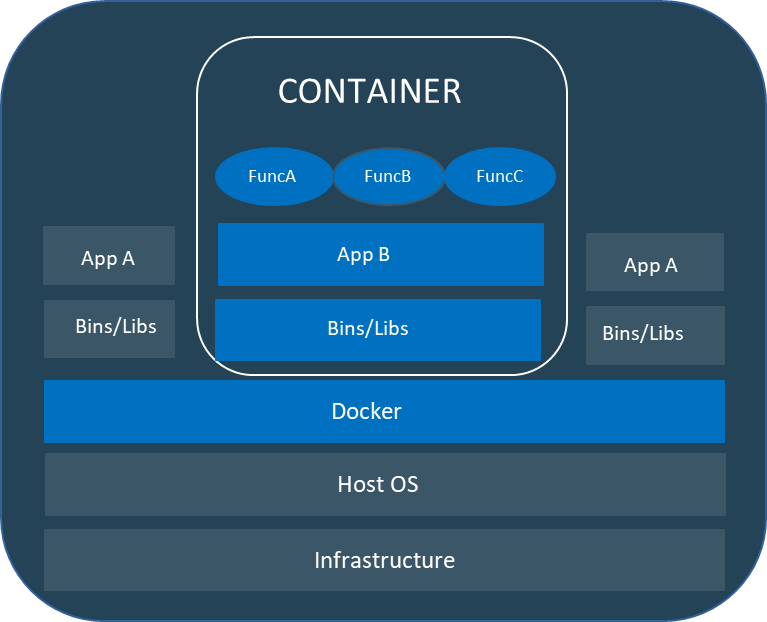
How edge computing is driving digital experiences
There’s a reason to get excited about edge computing when considering all the various use cases that it supports. Here are three noteworthy use cases for edge computing:
1. Livestreaming
One area where edge computing can make an immediate impact is with livestreaming. Imagine an auto racing fan watching an F1 race on an iPad. In a traditional network deployment, data flows from the on-site camera and goes to a server, which connects to the cloud via the internet. The cloud becomes the operator in this case, connecting to a local server, and then to the user. However, if multiple connections run through this server, a major bottleneck will occur. Further bottlenecking may occur when connecting the cloud to the ISP, causing a sub-par user experience with high latency. This scenario could easily create a 10-second lag, meaning the audience on site would already cheering while the person watching at home is still waiting for the results.
Now, let’s look at the difference with an edge framework in place.
The scenario stays the same, where the camera collects the data and sends it to the server. But in this case, the data flows to a local server. From there, the data goes directly to an edge computing environment for processing. The edge computes the nodes and transmits them to the local server and then to the end user. This eliminates jitter, resulting in a great user experience. The user may have a delay of one second or less, meaning that person would see the action in near real-time along with the other viewers. This approach also increases security. When transmitting sensitive data, running it through a public network may expose the information to surveillance or theft. Edge computing avoids routing data over a public network, making it much more secure.
2. Smart cities
Edge computing can also play a big role in helping smart cities move beyond conceptual stages. Smart cities generate enormous amounts of data from connected sensors, traffic systems, and cameras. When relying on traditional cloud systems, smart cities struggle with heavy bottlenecks, inefficiencies, and high operating costs. With an edge computing system in place, data can flow into nearby edge centers for local processing — taking pressure off the cloud and help smart cities operate faster.
3. Industry 4.0
Organizations in the manufacturing industry are using edge computing to achieve digital transformation and transition to Industry 4.0. In one example, Zenlayer recently helped industrial internet provider Schneider improve connectivity for an ABB train in its Beijing factory to its data center in Wuhan. The company struggled to move the train due to poor connectivity, even with a dedicated line in place. On top of that, items and materials were disappearing due to a lack of on-site visibility and real-time monitoring.
With the help of Zenlayer, the company drastically improved both issues. Zenlayer built a small local private cloud to carry data from the local PLA, conduct analysis, and extract and upload useful information to its data center in Wuhan. In addition, Zenlayer is now cooperating with Baidu, performing AI calculations in Beijing and Shanghai, and connecting them to Beijing through a dedicated line with a delay of only 10 milliseconds, relieving a big pain point. The factory now has hundreds of cameras, capturing facial information as well as employee dress code data. The environment is safer and more efficient than ever before.
Zenlayer’s approach to edge computing
If you’re new to Zenlayer, we’re an edge cloud service provider focusing on network connectivity and local computing. We believe a good user experience depends heavily on low latency connectivity. And in today’s market, the user experience means everything.
To date, Zenlayer has connected the United States, Southeast Asia, Africa, and Europe with our expansive global backbone, guaranteeing network security and low latency. The company now has more than 180 global data centers, covering 37 countries. Our backbone network bandwidth also exceeds 20 Tbps which is enough to power just about any app. We reach over 85% of the world’s internet population in under 25 ms with our edge cloud services ranging from Bare Metal Cloud, Cloud Networking, and Zenlayer Global Accelerator.
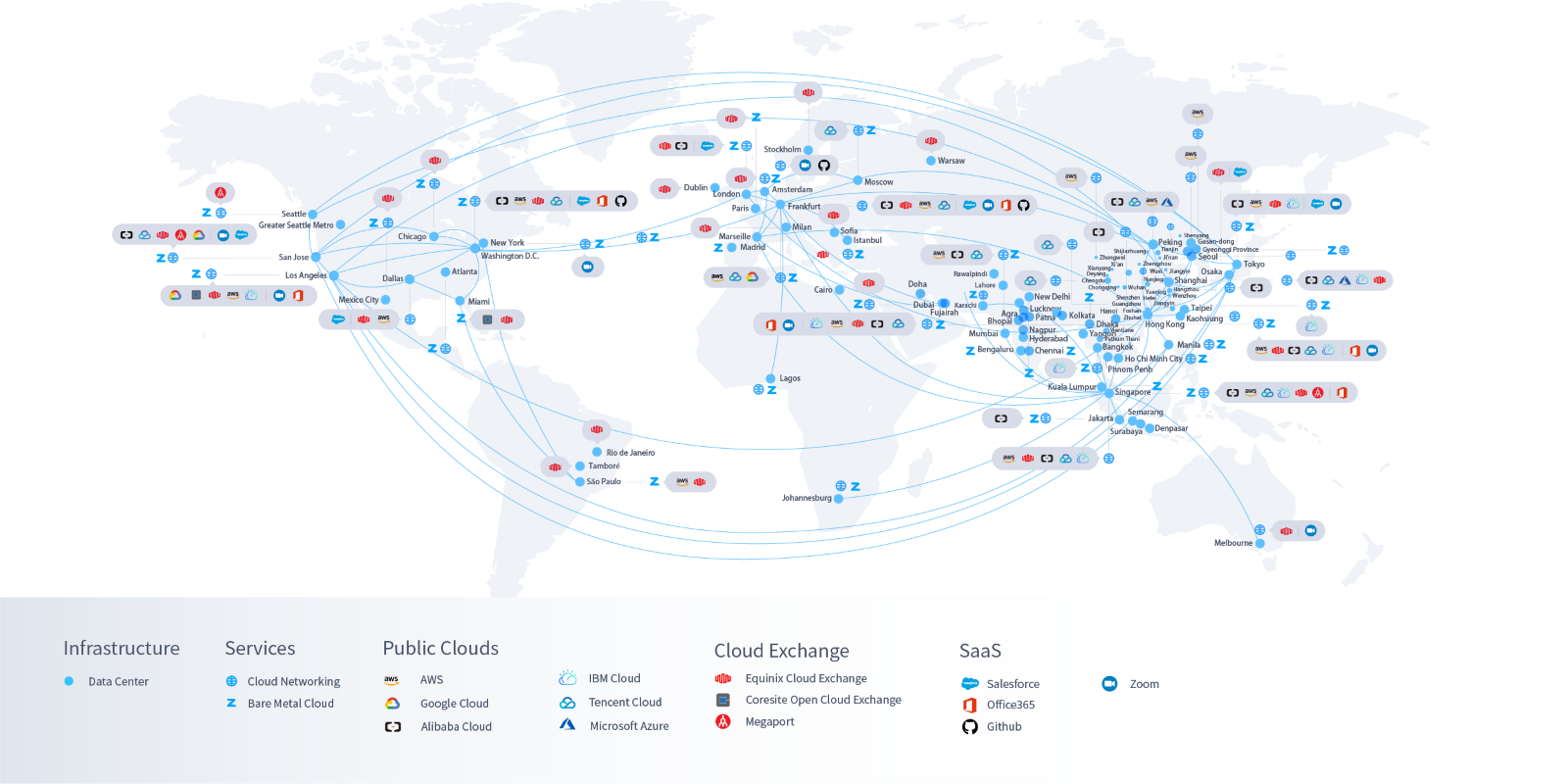
Experience the network edge with Zenlayer
If your company is struggling with poor application performance, it may be time to change your approach and consider an edge deployment.
Explore Zenlayer by scheduling a free consultation today.

